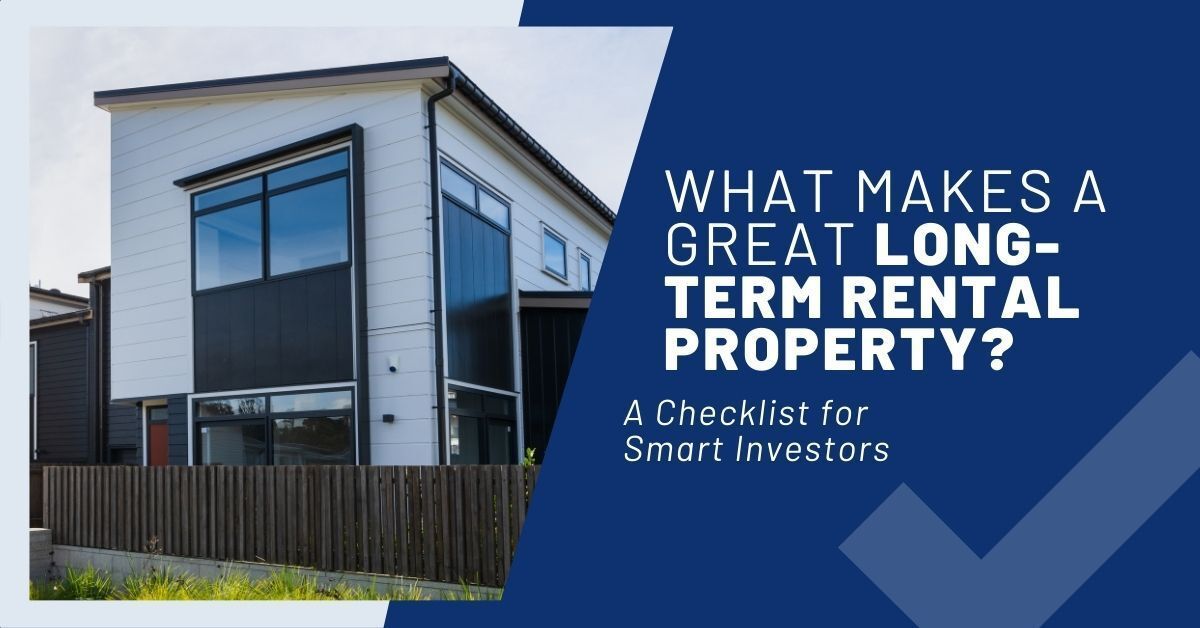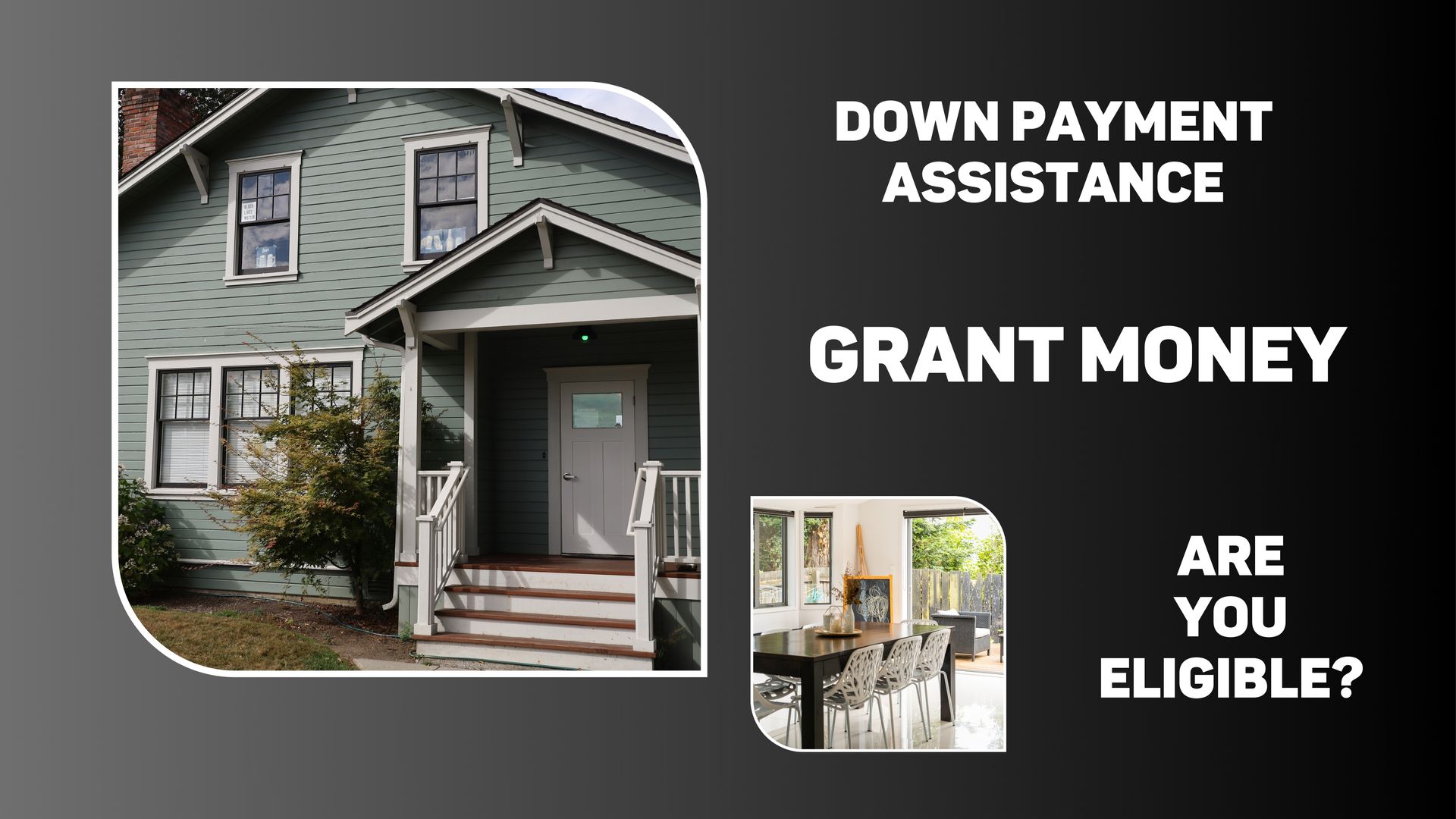Blog

Timing isn’t everything in real estate, but it can mean the difference between saving $20,000 or paying a premium, selling in 30 days or waiting three months, and negotiating from a position of strength or uncertainty. As we look toward 2026, understanding seasonal patterns has become more critical than ever. With inventory levels normalizing and market conditions continuing to evolve, knowing when to make your move can dramatically impact your outcome. Whether you're a first-time buyer watching every dollar or a seller trying to maximize your profit, the season you choose matters. The challenge? Not everyone can wait for the "perfect" time. Job relocations happen in January. A growing family needs more space in July. Retirement doesn’t wait for spring. This guide breaks down the pros and cons of each season so you can make the smartest decision within your timeline. Spring: Peak Selling Season (March-May) Spring isn’t called peak season by accident. The housing market comes alive with energy that is impossible to ignore. Data shows homes listed in spring sell in as few as 33 days, compared to 49 days in winter. 1 May also offers the highest seller premium, 13.1% above market value, translating to faster sales and higher returns. 2 Buyer psychology also plays a role. Warmer weather encourages open house attendance, longer daylight allows more viewings, and families aim to move before school starts, creating urgency. Spring blooms and greenery boost curb appeal in ways winter staging cannot match. 3 The Competition Factor The trade-off is that spring’s advantages come with more competition. Sellers must make their homes stand out, pricing correctly, staging well, and marketing aggressively. Buyers benefit from the largest inventory, with new properties listed weekly, but face higher competition. In May and June, 35% of buyers pay above list price compared to 24% in January, making bidding wars common and increasing pressure to decide quickly. 4 Summer: Extended Peak Season (June-August) As spring transitions to summer, the market maintains its momentum. June often sees the highest sales volume of the year, with more than 16,500 homes selling per day. 1 The Family Timeline Summer’s appeal aligns with family schedules, as school breaks let children move without disrupting education. Warm weather and long days make moving easier and provide ample time for viewings. Outdoor spaces like pools, patios, and landscaping are at their best. Higher prices and sales activity reflect the premium buyers pay for peak-season convenience. Late Summer Shifts By August, changes appear. Unsold spring or early summer listings may become “stale,” and buyers begin settling as school starts. Competition eases slightly, though prices stay high, making it a transition month where patient buyers can benefit. A practical concern is moving costs, which peak in summer due to high demand. Nearly half of all household moves occur between June and August, increasing competition for movers and rental trucks alike. 5 Fall: Underrated Opportunity Season (September-November) Fall might be real estate's best-kept secret. While conventional wisdom suggests spring is the only time to transact, savvy buyers and sellers increasingly recognize fall's unique advantages. Less Competition, More Serious Players Data shows a large share of home sales occur in the fall, a detail often overlooked. With fewer competing sellers, listings stand out more, and active buyers tend to be serious and ready to act quickly. 3 October typically offers the best conditions for buyers. Data shows it has one of the lowest seller premiums of the year—about 8.8% above market value—as demand cools and competition eases. 2 Home prices also tend to dip slightly from summer highs, saving buyers thousands compared to peak-season purchases. 4 For first-time buyers especially, fall can be an ideal time to find value without the bidding wars of spring and summer. The Urgency Factor Fall brings natural urgency. Buyers aim to close before holidays and bad weather, while sellers may be motivated by taxes or avoiding a winter listing. Comfortable weather in many areas makes showings easier. Fall buyers are often more decisive, with fewer casual browsers and more serious purchasers ready to negotiate. Winter: Value Season (December-February) Winter gets a bad reputation in real estate, but for buyers with flexibility, it offers the year's best value proposition. The Numbers Don’t Lie The low-competition environment in winter provides the best opportunity for buyers to secure a discount. In January, only 24% of buyers pay above list price compared to 35% in May and June, which greatly reduces the chance of bidding wars. 4 This lower competition also means winter homes stay on the market longer, averaging 49 days versus 31 days during peak season, giving buyers more time, less pressure, and stronger negotiating power. 1 Motivated sellers become more flexible as the holidays pass. Moving companies also offer their lowest rates in winter. Winter’s Challenges Winter has trade-offs. Sellers face the lowest buyer traffic, holiday distractions, limited curb appeal from dormant landscaping, and shorter daylight for showings. Yet winter offers advantages. Less competition can help if you price aggressively and present well, and buyers who do visit are highly motivated, often relocating for jobs. Warm-climate markets like Florida and Arizona see smaller winter slowdowns, making location important. 1 Snow and ice create safety hazards, and cold weather makes moving harder. However, winter also reveals property truths, such as heating efficiency, drafty windows, and roof performance, which is all information savvy buyers use during inspections. Regional Differences: Not All Markets Are Equal Seasonal changes in the real estate market depend heavily on location, meaning a strategy that works in one city may fail in another. Markets in the Midwest and Northeast experience the most dramatic seasonal swings due to harsh winters, which push most activity into the short window between May and August. For example, daily home sales in the Midwest often more than double from January to June, with states like Illinois and Ohio seeing significant annual price swings. In contrast, Southern and Western markets enjoy stable, year-round activity because of mild weather. Places like California and most of the South see much less severe slowdowns in winter. The exception markets are those where mild winter weather attracts buyers, like Phoenix, Arizona , where the best selling time is late November. Understanding these local patterns is crucial, as local market dynamics always matter more than general national statistics. Feel free to reach out if you would like to know more about the specific seasonal patterns in your local area. Pricing Strategies by Season Pricing strategy must adapt to seasonal realities. What works in May fails in December, and vice versa. Spring and Summer Pricing During peak season, competitive pricing often attracts multiple offers. Pricing strategically 10–15% below comparable sales can spark competition and push final offers above list. Psychological pricing also matters; listing slightly under round numbers ($349,000 instead of $350,000) increases online visibility and appeals to buyer behavior. Emphasizing seasonal features such as outdoor spaces, natural light, and blooming gardens helps justify premium pricing. 3 Fall Reality Check As competition declines in fall, pricing should be more realistic. Listing slightly below spring comparables can help generate activity. Flexibility on price attracts serious year-end buyers eager to close before the holidays and bad weather. Recognizing buyer urgency allows you to price strategically rather than reactively. 2 Winter Aggression Winter requires more aggressive pricing to attract a smaller buyer pool. Pricing 5–10% below spring values can create immediate interest. Motivated sellers should focus on value over premium pricing. Buyers shopping in January aren’t bargain hunters, they’re seeking homes that justify moving during an inconvenient season. 1 Year-round best practices stay consistent: use a Comparative Market Analysis, consider current market conditions, account for unique property features that algorithms may overlook, and monitor comparable sales while staying open to adjustments. Buyer Offer Strategies by Season Spring and Summer Competition Peak season requires quick, confident action. Get pre-approved to show you’re a serious buyer and be ready to move fast. Consider offering above asking price when you find the right property, and use an escalation clause to outbid competitors up to your limit. Flexible closing dates also strengthen your offer. Some buyers write personal letters to create emotional connections. Fall and Winter Leverage Negotiating power shifts with the seasons. In fall and winter, when seller competition drops and buyer pools shrink, you gain leverage. You can more easily request seller concessions such as closing costs, home warranties, repairs, or even appliances and fixtures. Use inspection results to negotiate price reductions, as motivated sellers grow more flexible later in the season. You can also request longer inspection periods and winter move-in credits.¹ Year-Round Negotiation Fundamentals No matter the season, understanding the seller’s motivation is key. Support your offer with market data rather than emotion, and build rapport when possible. Stay calm and avoid emotional decisions. Have your agent handle offers and counteroffers to reduce tension. Know your limits and walk away from deals that don’t fit your goals. In buyer’s markets, be assertive; in seller’s markets, make offers strong and decisive. The fundamentals stay the same, though their intensity shifts with the season. BOTTOMLINE Seasonality creates opportunities and challenges, but personal circumstances should drive timing. Spring/early summer brings the highest prices and fastest sales. Winter offers buyers the best deals. Waiting for the “perfect” season doesn’t help if life demands action. Understanding your specific situation, timeline, and goals allows us to create a customized strategy that maximizes outcomes within your constraints. The best time to move is when it's right for you. Sources 1. National Association of REALTORS®. Navigating the Housing Market: A Seasonal Perspective. 2024. https://www.nar.realtor/blogs/economists-outlook/navigating-the-housing-market-a-seasonal-perspective 2. Bankrate. Best Time to Sell a House. 2024 https://www.bankrate.com/real-estate/best-time-to-sell-house 3. Investopedia. How Seasons Impact Real Estate More Than You Think. 2024. https://www.investopedia.com/articles/investing/010717/seasons-impact-real-estate-more-you-think.asp 4. Zillow https://www.zillow.com/learn/best-time-to-buy-a-house/ 5. My Moving Journey https://mymovingjourney.com/blogs/moving-in-peak-season-vs-off-season

For millions of homeowners, checking their Zillow Zestimate has become as routine as checking a stock portfolio—a quick hit of seeing your home's estimated value, right at your fingertips. With 178 million monthly users and over 100 million homes covered, the platform's instant, free, and convenient appeal is undeniable. But here's a famous cautionary tale: Spencer Rascoff, Zillow's former CEO, sold his own home for a staggering 40% less than its Zestimate. This story highlights a critical fact that many homeowners don't realize: Zillow itself calls its Zestimate a "starting point... not an appraisal" 1 . If the creator of the system can be off by that much, how accurate are online home valuations for the rest of us? Relying on an automated number for your most valuable asset could be a mistake worth tens of thousands of dollars. In this article, we'll examine how these powerful algorithms work, reveal the data behind their wildly varying accuracy rates, identify what they systematically miss, and show why local human expertise remains irreplaceable when precision—and your equity—matters most. How These Algorithms Actually Calculate Your Home's Value Automated Valuation Models are algorithms designed to crunch massive amounts of data in seconds. 3 Think of them as sophisticated calculators—impressive in computational power, but limited by the quality and completeness of their inputs. These systems analyze public records, tax assessments, recent comparable sales from the MLS, and basic property characteristics like bedrooms, bathrooms, and square footage. 4 For standard properties with plenty of recent comparable sales, this data-driven approach can produce reasonable estimates. But here's the fundamental limitation that shapes everything else we'll discuss: these models rely purely on historical data and never actually visit your property. They're backward-looking by design, using what sold yesterday to predict what might sell tomorrow, and while an algorithm can tell you that your home has three bedrooms, it cannot tell you that the primary suite has stunning morning light that makes buyers fall in love. Accuracy and When Online Estimates Miss the Mark Now for the numbers that every homeowner needs to understand. When discussing AVM accuracy, you'll encounter the term "median error rate." This measures how far the estimate typically deviates from the actual sale price—specifically, half of all estimates fall within this percentage, and half fall outside it. 2 Lower is obviously better, but context is everything. The On-Market vs. Off-Market Divide Here's where online home estimate accuracy gets interesting—and where most homeowners make their biggest mistake.

Real estate scams are targeting more victims than ever before, and they're becoming increasingly sophisticated. Nearly 10,000 Americans fell victim to real estate fraud in 2024, losing over $173 million according to FBI reports. ] Even more concerning, about one in four home buyers or sellers encounter suspicious activity during the closing process , and one in 20 end up victims of wire fraud. 2 These aren't isolated incidents targeting the naive or unprepared—they're professional operations that can fool experienced investors and savvy consumers alike. Scammers have adapted to modern technology and remote transactions, making their schemes harder to detect and more financially devastating than ever. The shift to digital communications and remote closings has created new vulnerabilities that criminals actively exploit. Whether you're a first-time homebuyer, seasoned investor, property owner, or renter, understanding these threats and knowing how to protect yourself is essential. From wire transfer hijacking to fake listings, title theft, and impostor agents, real estate scams come in many forms. Here's how to recognize and protect yourself from the most common threats. Wire Transfer Fraud: The Costliest Threat Wire fraud strikes at closing when buyers are most vulnerable. Criminals hack or spoof emails from real estate agents, title companies, or attorneys, then send fake wiring instructions directing your down payment to their accounts. The setup appears completely legitimate—the email looks official, uses proper terminology, and creates urgency around closing deadlines. Real estate wire fraud schemes cost victims $145 million in reported losses in 2023 1 , with typical losses exceeding $70,000 per case . 4 For many homebuyers, this represents their entire life savings and down payment. By the time fraud is discovered, the money is usually gone forever, as these transfers are nearly impossible to reverse. Critical warning signs include: Last-minute wiring instruction changes marked urgent or claiming emergencies Email address anomalies with letters off or different domains (like "titlle-co.com" instead of "title-co.com") Pressure tactics demanding immediate action to avoid closing delays Protection requires verification. Always confirm wiring instructions in person or by calling verified phone numbers—never rely on email contact information. Many brokers now require wire fraud acknowledgment forms. 5 If fraud occurs, contact your bank and the FBI's IC3 hotline within 24-72 hours for the best recovery chances. 5 Rental Listing Scams: Too Good to Be True Rental scams use fake listings or fraudulent "landlords" to collect upfront payments for properties that don't exist or aren't actually available. Scammers copy real listings with gorgeous photos and below-market rents to lure victims, particularly those under pressure to find housing quickly in competitive markets. The emotional manipulation is deliberate—scammers create urgency by claiming multiple interested renters or limited availability. They often pose as property managers or landlords who are conveniently out of town, overseas for work, or on missionary trips, making in-person meetings impossible. Red flags include: Unusually low rent for the area or property quality Remote landlords who claim they're out of the country and can't meet in person Upfront payment requests before property viewing or lease signing[^7] Never send money for rentals you haven't verified. Insist on inspecting properties before paying anything, and verify ownership through county records. Avoid wire transfers, gift cards, or cryptocurrency for deposits—these payment methods are nearly impossible to recover. The implications extend beyond renters. Homeowners can also be targeted when scammers impersonate property owners to illegally rent out vacant homes. If you own vacant property or one that's listed for sale, monitor for fake rental ads using your address. Some counties offer property fraud alert services that notify you of suspicious activity. Title and Deed Fraud: Stealing Your Home Title fraud involves criminals forging documents to steal ownership of your property. They typically use quitclaim deeds with forged signatures to make it appear they own your home. Once they've fraudulently transferred ownership, they can take out loans against it, sell it, or rent it out, leaving you with a legal nightmare to undo. Vacant homes, investment properties, and homes owned free-and-clear are prime targets because fraud is less likely to be detected quickly. The trend is accelerating as criminals become more organized. The FBI's Boston field office has reported a "steady increase" in quitclaim deed fraud cases, exacerbated by remote transactions. Between 2019 and 2023, over 58,000 victims reported $1.3 billion in losses to real estate fraud , including title scams. 8 Some operations involve crime rings with teams specifically tasked with identifying target properties through public records. Watch for unusual mail including notices of new mortgages you didn't initiate, stopped tax bills, or deed transfer notices. If you stop receiving property tax statements or get unexpected foreclosure notices, investigate immediately. Protect yourself by monitoring your property records through county databases and setting up fraud alerts where available. Consider title insurance for additional protection. Fake Buyers, Sellers, and Realtors Identity scams involve criminals impersonating transaction parties or real estate professionals. Fake buyer scams target home sellers with attractive cash offers, then send fake cashier's checks for deposits exceeding required amounts, asking sellers to wire back the difference. Seller impersonation has exploded recently— more than half of U.S. real estate agents (54%) encountered seller impersonation attempts in 2023 . 9 Fraudsters pose as property owners to list and sell properties without authorization. Fake real estate professionals create phony profiles, sometimes stealing legitimate agents' names and photos to mislead clients into paying bogus fees. In one recent Florida case, a scammer stole a real Realtor's identity online, misled multiple clients, and collected thousands in illegitimate fees before the fraud was uncovered. 13 Always verify identities by checking photo IDs and confirming credentials through state licensing databases. Legitimate Realtors have license numbers you can verify independently. Meet in person when possible and independently verify property ownership through public records. If you receive unsolicited offers to buy your home, never provide banking information or accept funds from unvetted parties. Bait-and-Switch Schemes These scams promise attractive deals, then switch to inferior terms once you're hooked. Rental bait-and-switch advertises great properties that are suddenly "unavailable," then pushes less desirable alternatives at higher prices. "We Buy Houses" schemes offer inflated purchase prices, then renegotiate last-minute or assign contracts to other buyers, often leaving sellers with as little as 50% of market value . 6 Mortgage bait-and-switch promises unrealistic rates requiring large upfront fees, then switches to higher rates or forfeits your deposit if you decline. Trust your instincts when deals change suddenly or seem too good to be true. Get all offers in writing and avoid non-refundable upfront fees. Best Practices: Your Defense Strategy Work with licensed professionals. Use reputable real estate agents, attorneys, and title companies. Verify licenses and check reviews. Verify all identities. Ask for photo ID and confirm credentials through independent sources. Meet in person or via video call when possible. Protect personal information. Use strong passwords, enable two-factor authentication, and never email sensitive financial data. Avoid pressure tactics. Legitimate deals don't require immediate action that bypasses verification safeguards. Use secure payment methods. Wire transfers should only go to verified escrow accounts. Avoid cash, gift cards, or individual wire transfers. Monitor your property. Regularly check title records and set up fraud alerts where available. Report suspected fraud to local police, the FBI's IC3, and the FTC to help protect others and potentially recover losses. BOTTOMLINE Real estate scams exploit trust and urgency, but the warning signs are consistent: bypassed safeguards, pressure tactics, unverified identities, and deals too good to be true. Protection comes from verification, patience, and working with experienced professionals who can spot red flags. Whether you're buying, selling, or renting, take time to properly vet every aspect of your transaction. If something feels wrong, pause and investigate—it's better to lose a "great" deal than become a fraud victim. Planning a real estate transaction? Let's discuss how to protect your investment while achieving your goals. An experienced agent can help you navigate the process safely and spot potential scams before they become costly problems. Sources 1. FBI Internet Crime Complaint Center - https://www.ic3.gov/AnnualReport/Reports/2024_IC3Report.pdf 2. National Cybersecurity Alliance - https://staysafeonline.org/resources/5-common-real-estate-scams-you-need-to-know-about/ 3. Rocket Mortgage - https://www.rocketmortgage.com/learn/real-estate-scams 4. Eftsure - https://www.eftsure.com/articles/wire-fraud-statistics/ 5. National Association of Realtors - https://www.nar.realtor/wire-fraud 6. MMBB - https://www.mmbb.org/article/unmasking-real-estate-scams/ 7. Federal Trade Commission - https://consumer.ftc.gov/articles/rental-listing-scams 8. Florida Realtors - https://www.floridarealtors.org/news-media/news-articles/2025/06/quitclaim-deed-fraud-rise-fbi-says 9. American Land Title Association - https://www.alta.org/news/news.cfm?20231108-Over-Half-of-US-Real-Estate-Professionals-Experienced-a-Seller-Impersonation-Fraud-Attempt-in-2023 10. NBC Washington - https://www.nbcwashington.com/news/local/scammers-impersonating-owners-in-vacant-land-sales/ 11. Kiplinger - https://www.kiplinger.com/article/real-estate/t048-c050-s002-how-to-protect-your-home-from-deed-theft.html 12. Federal Housing Finance Agency - https://www.fhfa.gov/AboutUs/Reports/ReportDocuments/FraudPrevention.pdf NBC Miami - https://www.nbcmiami.com/investigations/scammer-posing-as-realtor-costs-victims-thousands-and-unfairly-tarnishes-a-reputation/3598591/

Real estate continues to dominate as America's favorite long-term investment strategy. For the 12th consecutive year, 37% of Americans consider real estate the top investment choice—nearly doubling stocks at just 16%. 1 This isn't just sentiment; investors are putting their money where their beliefs are, purchasing 13% of all homes sold in 2024. 2 The truth is, real estate offers unique advantages that traditional investments can't match. A rental property provides multiple income streams, delivering monthly rent payments while simultaneously building equity and appreciating in value. Plus, leverage amplifies returns: Even if you put down 20%, you’ll benefit from 100% of the property's appreciation gains. Tax advantages, such as depreciation and deductible expenses, can further boost profitability. 3 When executed wisely, rental properties can deliver steady cash flow today and significant wealth tomorrow. But success starts with preparation—knowing how rentals make money, who is best suited to invest, what to look for, and where to start. How Rental Properties Build Wealth Great rental properties create wealth through three primary channels that work together to compound returns over time: Cash Flow represents net monthly income after expenses. The formula: Total rent minus all expenses (mortgage, taxes, insurance, maintenance, management fees, etc.). A duplex renting for $3,300 monthly with $2,700 in expenses generates $600 monthly positive cash flow—money for profit or reinvestment. Appreciation refers to property value increases over time. Historically, U.S. home prices have risen approximately 3-5% annually. 4 A 5% annual appreciation on a $300,000 house adds $15,000+ to your equity annually from market gains alone. Equity growth also occurs as mortgage payments reduce loan principal. Ideally, tenant rent effectively covers these payments, so tenants are purchasing the property for you incrementally. If $500 monthly goes toward principal, you gain $6,000 in equity annually. The total return combines all three elements. While individual components might not create overnight wealth, together they compound impressively for patient investors. Who Should Invest in Rentals? Rental property investing isn’t for everyone. The most successful investors tend to share a few traits: Long-term wealth builders with financial stability and risk tolerance typically succeed. Investment properties require substantial down payments (typically 20-30%) plus cash reserves for maintenance and vacancies. You need stable finances with emergency funds before investing, as real estate is illiquid. 5 Detail-oriented, patient investors often find the greatest success. Nearly 90% of real estate investors encounter challenges—bad tenants, unexpected repairs, or incorrect pricing. 6 Smart investors educate themselves and analyze numbers carefully before buying. Hands-on, resourceful owners who can handle basic maintenance, repairs, and tenant management themselves also have an advantage. These investors can save thousands each year on property management and service fees, boosting overall returns. If you align with these traits, rental property investing can be a powerful tool for building lasting wealth. Where to Begin Your Investment Journey The first step is to contact an investment-savvy real estate agent. We can be an invaluable partner in finding and securing great properties by offering: Access to off-market deals that you can’t find on your own. We have extensive networks and can sometimes help you uncover properties before they are publicly listed. Expert market knowledge to help you choose the right property. We know which neighborhoods, property types, and home features are the most desirable to renters in our area. Deal analysis assistance to maximize your returns. We can help you estimate cash flow, cap rates, and return on investment. Ongoing network support that extends beyond closing. We maintain networks of reliable contractors, property managers, investor-friendly lenders, and insurance brokers. With the right guidance from day one, you can move forward with confidence and start building a portfolio that works for you. Your Rental Property Evaluation Checklist Not all rental properties offer equal investment potential. Smart investors use systematic criteria to identify truly great opportunities: Location & Market Analysis Location determines everything—tenant quality, rental demand, and appreciation potential. Focus on areas with strong rental demand near employment centers, universities, or transit systems ensuring steady tenant pools. Research local vacancy rates carefully. High neighborhood vacancy signals low demand, while low vacancy allows rent increases. Investigate safety and school quality—properties in low-crime areas with good schools attract stable, long-term tenants. 5 Evaluate regional economic trends beyond immediate neighborhoods. Growing employment opportunities drive housing demand. Research major employers that are expanding but avoid areas dependent on single industries. Check government infrastructure plans—new transit or development projects can boost values, but excessive new development might increase competition. 5 Financial Analysis Perform detailed cash flow analysis for every potential property. Calculate expected rent and subtract all expenses: mortgage payments, property taxes, insurance, HOA fees, management costs, maintenance reserves (budget 10% of rent), and vacancy allowances. The “1% rule” provides a quick assessment—monthly rent should equal at least 1% of purchase price plus any necessary repairs. Therefore, a $200,000 home should rent for at least $2,000 monthly. 5 Run sensitivity analysis: What happens if rents drop 5% or expenses increase 10%? Great properties remain profitable under various conditions. Property Condition & Carrying Costs Physical condition directly impacts returns. Older homes with outdated systems may require frequent, costly repairs. 7 Schedule professional inspections focusing on major components: roof, foundation, electrical, plumbing, and HVAC systems. Consider property layout—standard configurations like 3-bedroom/2-bathroom homes appeal to broader tenant bases than unusual layouts. Factor in capital expenditure timelines for major items needing replacement every 15-30 years. Research property tax rates and insurance costs carefully. Some areas have taxes so high that even nice properties won't generate profit. Get insurance quotes before purchasing, especially for properties in flood zones or disaster-prone areas requiring expensive additional coverage. Property Type Selection For most investors, single-family homes, condominiums, or townhomes offer the best starting point. Single-family homes typically attract longer-term tenants who treat the property as their home, resulting in steadier income. 5 Unless you’re planning to use your property as a short-term or vacation rental, avoid highly specialized properties like luxury mansions or tiny studios targeting niche markets with higher vacancy risks. “Bread and butter” 2-4 bedroom homes in middle-class neighborhoods form successful long-term rental portfolio foundations. 5 Due Diligence Requirements Verify all numbers independently. Research comparable rents for similar nearby properties ensuring realistic projections. 7 Check sales comparables to avoid overpaying. Schedule professional inspections and read reports thoroughly—unexpected problems can transform great deals into money pits. Understand local landlord-tenant laws covering eviction processes and deposit rules. Consult professionals, as needed, for valuable guidance. If this checklist seems overwhelming, don’t worry! We can help with each of these items. By following this checklist, we’ll separate high-performing rental opportunities from costly mistakes and position you for long-term success. BOTTOM LINE Great rental properties aren't found by chance—they're identified through systematic evaluation. Properties that build lasting wealth combine healthy cash flow, solid locations, sound physical condition, and strong growth potential. Success requires patience, proper analysis, and the right team. While markets fluctuate, well-chosen properties consistently reward investors through income, appreciation, and equity growth creating real wealth over time. Ready to start building wealth through rental property investment? The fundamentals we’ve outlined provide your foundation, but local market expertise and deal analysis make the difference between mediocre and exceptional investments. Let's discuss how these principles apply to current opportunities in your target market. Sources 1. Gallup - "Real Estate Still Best Investment" - https://news.gallup.com/poll/660161/stocks-fall-gold-rises-real-estate-best-investment.aspx 2. Realtor.com Research - "Investor Report June 2025" - https://www.realtor.com/research/investor-report-june-2025/ 3. Investopedia - "Real Estate vs. Stocks" - https://www.investopedia.com/investing/reasons-invest-real-estate-vs-stock-market/ 4. Redfin Blog - "Average home appreciation per year" - https://www.redfin.com/blog/average-home-appreciation-per-year/ 5. Investopedia - "10 Factors to Consider When Buying an Income Property" - https://www.investopedia.com/articles/mortgages-real-estate/08/buy-rental-property.asp 6. Clever Real Estate Survey - "Residential Real Estate Investing in 2024" - https://listwithclever.com/research/residential-real-estate-investing-2024/ 7. Investopedia - "5 Ways to Value a Real Estate Rental Property" - https://www.investopedia.com/articles/mortgages-real-estate/11/how-to-value-real-estate-rental.asp

As a homeowner, you’re likely diligent about the basics—mowing the lawn, touching up paint, and cleaning regularly. But what about the critical home maintenance tasks you don’t see every day? Research shows that home maintenance frequently takes a backseat, even with the best intentions. In fact, a recent survey found that 60% of homeowners have postponed necessary maintenance or repairs, while 40% admit to paying for a major home repair that could have been avoided with better upkeep. 1 Still, it’s not just about avoiding costly emergencies—it’s also about maximizing the return on your biggest investment. According to research by Thumbtack, homeowners who do put in the extra care are rewarded: Well-maintained homes sell for an average of 10% more. 2 Let’s explore 10 often overlooked home maintenance tasks and how they can save you thousands in long-term costs. 1. Gutter Cleaning: Your First Line of Protection Clogged gutters can cause water to overflow and seep into your home’s foundation, attic, or siding. Left unchecked, this can lead to foundation damage, rot, and even flooding. The real cost of neglect: While professional gutter cleaning averages $162 nationally (up to $390 for multi-story homes), water damage repair costs can add up—averaging $5,100 for foundation damage and $4,300 for a flooded basement. 3,4,5 Your action plan: Clean gutters at least twice annually—in spring and fall. Use a gutter scoop or hose to remove debris. Consider investing in gutter guards to reduce future clogs. This small task prevents major structural damage and prolongs the life of your home’s exterior. 2. HVAC Filter Replacement: Small Task, Major Impact A dirty HVAC filter reduces airflow, causes your system to work harder, and increases energy use. It can also lead to health concerns from trapped contaminants circulating in your home’s air. 6 The hidden costs: A neglected filter can lead to clamped-up coils, furnace failures, and sometimes a complete system replacement costing $4,000-$12,000. 6 Your maintenance routine: Replace filters every 1–3 months, depending on filter type, usage, and the number of pets in your home. Opt for MERV 8–13 filters for efficiency and air quality balance. 7 Schedule full-system annual servicing ($175–$550) to catch hidden issues early. 8 This simple task saves on energy bills (15-20% according to the Department of Energy) and extends your HVAC system’s lifespan. 8 3. Water Heater Flushing: Preventing Sediment Buildup Over time, sediment accumulates in your water heater tank, reducing efficiency and shortening the unit's lifespan. Left unchecked, this buildup can cause leaks or complete tank failure. The financial reality: Regular flushing prevents early replacement and may be required to maintain your water heater’s warranty. 9 You can do it yourself or hire a professional for around $160. 10 Your annual process: Turn off power and water supply to the unit Attach a hose to the drain valve and empty the tank completely Check your anode rod; it may need to be replaced every 3–5 years. This simple routine extends your water heater’s life and preserves energy efficiency. 4. Dryer Vent Cleaning: A Critical Safety Task Lint buildup in dryer vents doesn’t just reduce drying efficiency—it’s one of the leading causes of house fires in the U.S. 11 They also force your dryer to work harder and longer for each load. The cost factor: Professional dryer vent cleaning costs about $144 nationwide, while fire-related damage can run into the tens of thousands. 12 Your safety protocol: Clean dryer vents every six months using a brush kit, or call in a professional. Replace plastic ducts with rigid metal ones, which resist lint clogs. Monitor drying times—longer than usual may signal a blockage. This potentially life-saving task improves both safety and appliance efficiency. 5. Refrigerator Coil Cleaning: The 35% Energy Drain Your refrigerator’s coils help expel heat. When coated in dust, they force the compressor to work harder, increasing energy bills and shortening appliance lifespan. The efficiency impact: Dirty coils can increase energy use by up to 35% and, over time, can lead to costly repairs or replacement. 13 Your simple solution: Check your manufacturer’s guidelines; many recommend cleaning every six months. Locate coils behind or at the bottom of the unit and use a vacuum or coil brush to remove dust and debris. Keep condenser fan areas unobstructed. This $0 DIY task can trim your electricity bill—and prevent early breakdown. 6. Garage Door Lubrication: Prevents Costly Repairs A squeaky garage door means friction—and friction leads to wear on moving parts, costly spring damage, and failed openers. The mechanical reality: A new garage door opener can cost between $350-$1000 installed, but a can of lubricant only costs about $10. 14 Your annual routine: Check the manufacturer’s guidelines to choose the right lubricant for your garage door. Prioritize safety: Ensure the door is fully closed and cut the electricity. Check for any signs of damage before proceeding, and call in a pro if needed. 15 This simple task eliminates squeaks and avoids expensive mechanical repairs. 7. Sump Pump Testing: Your Basement's Guardian Your sump pump quietly protects your basement from water damage—but it needs testing to ensure it works when you need it most. The flood prevention factor: Sump pump failure during a storm can result in thousands of dollars in cleanup costs. 5 Your quarterly test: Pour water into the pit to ensure the float triggers the pump. Confirm pump and drainage are working correctly. Clean the inlet screen once per year to avoid clogs. This 10-minute check gives peace of mind and avoids major flood damage. 8. Chimney Cleaning: Preventing House Fires According to the National Fire Protection Association, the leading cause of home heating fires (30%) is a dirty chimney. 16 The fire prevention imperative: Professional cleaning costs between $100-$350 and is crucial for anyone burning wood. 17 The cost of ignoring this task includes chimney repairs and fire damage that can devastate homes. Your annual safety check: Hire a certified chimney sweep for inspection and cleaning, if needed. Use only seasoned wood to reduce creosote buildup. Install a chimney cap to block debris and critters. Professional chimney maintenance is a non-negotiable safety investment. 9. Roof Inspection: Protecting Your Shelter Your roof endures a lot—storms, sun, pests—and while damage may start small, it can become unbelievably costly if ignored. The structural stakes: A professional inspection averages $239, but some roofers will offer one for free. 18 Roof repair costs have surged 28.47% year-over-year. 19 A new roof now costs $9,500 on average. 20 Your inspection process: Twice per year, perform a DIY inspection for missing shingles, cracked flashing, and sagging areas. Check your attic for stains or leaks after rainfall. Consider a professional inspection every 1-2 years, depending on your risk factors. 18 Early intervention prevents thousands in repairs and helps retain resale value. 10. Water Pressure Monitoring: Protecting Your Plumbing Many homeowners never check their home’s water pressure, but levels above 80 psi can damage pipes, appliances, and fixtures throughout your home, leading to premature failures and leaks. The pressure problem: Water pressure that’s too high can damage your pipes and lead to expensive repairs or flooding. Pressure that’s too low can impact the performance of your faucets and appliances. 21 Your annual check: Use a water pressure gauge connected to an outdoor faucet. Ideal pressure: 40-60 psi. Install a regulator if it runs high. Monitor for sudden changes that could signal a plumbing issue. 21 This small check helps you avoid hidden damage to your entire plumbing system. Creating Your Home Maintenance Schedule Rather than reacting to emergencies, create a proactive plan. Here's a maintenance chart that puts it all in one place:

As we reach the midpoint of 2025, the U.S. housing market stands at a critical juncture. The frenzy of the pandemic-era real estate boom has long since cooled, but in its place we’re seeing a market searching for balance. Higher mortgage rates, cautious buyers, and rising home inventory are combining to reshape what it means to buy or sell a home in today’s climate. “The housing market is at a turning point,” says Nadia Evangelou, senior economist and director of real estate research at the National Association of Realtors. 1 This turning point brings both challenges and opportunities. Whether you’re buying, selling, or just keeping a close eye on the market, understanding these evolving trends is essential. In this comprehensive market update, we examine four key factors influencing today's housing market and provide actionable strategies for navigating these evolving conditions.

Navigating the real estate market without guidance is like starting an expedition without a map. Whether you're selling your cherished family home or searching for your dream property, having the right real estate agent by your side can make all the difference. According to a 2024 report from the National Association of Realtors, agent-represented homes sold for a median price of $435,000, compared to just $380,000 for those sold by owners alone. 1

Thinking about listing your home in 2025? If so, you're smart to start planning ahead. With housing inventory rising in many market segments, today’s sellers need more than just a “for sale” sign to stand out. 1 The good news? You can still make a strong impression and command top dollar—if you know what today’s buyers are really looking for. We’ve outlined six of the top homebuyer priorities in 2025, along with a clear action plan to help you position your property for success. Whether you're weeks or months away from listing, these insights will help you attract serious offers and maximize your return. BUYER PRIORITY #1: Move-In-Ready Condition Buyers want homes that are ready to enjoy from day one. In fact, a recent survey found that 94% of buyers said it was either “very important” or “somewhat important” to buy a home that’s move-in ready. 2 Properties that feel fresh and well-maintained are far more likely to attract competitive offers. Seller Action Plan: Refresh your interior. This might include painting rooms in neutral, contemporary colors and swapping outdated fixtures for more modern alternatives. We may also recommend that you take down heavy drapery or dated blinds to brighten your space and clean or replace flooring to create a clean and cohesive look. Fix anything that’s broken. If something isn’t working quite right, repair it now. Provide maintenance records, if you have them, and consider a pre-listing inspection to identify potential issues early—helping avoid delays or negotiations later. We can advise you on the best course of action given your circumstances and your home’s condition. Strategically enhance kitchens and bathrooms. Modern kitchens and bathrooms are a major selling point for many buyers. 3 While you don’t necessarily need a full remodel, smaller updates—like replacing kitchen appliances or retiling a bathroom shower—can make a big difference. At a minimum, ensure all surfaces–-including cabinets, countertops, and floors—are clean and in good condition, and address any grout issues or needed repairs. Our team can help you identify and prioritize strategic improvements that will maximize your home's appeal and market value. Contact us for a free evaluation! BUYER PRIORITY #2: Flexible Closing Timelines Many of today’s buyers are juggling complicated schedules and circumstances, especially if they need to time the sale of their current home with the purchase of their new one. If you are able to offer a flexible closing timeline, it can deliver an advantage. Seller Action Plan: Define your ideal timeline and explore your level of flexibility. We can discuss your goals and expectations for a closing timeline and consider how much flexibility you might be able to offer buyers. This will depend on your specific circumstances, but additional leeway can be helpful Make a plan to get out of your home quickly if needed. Some buyers need to move out of their current home quickly or relocate by a certain date to start school or a new job. Therefore, they may require an accelerated closing timeline. These buyers will be particularly interested in finding sellers who are willing and able to accommodate a fast closing. Worried about finding a new home if yours sells quickly? We can help you assess your options. 4 Leverage your real estate agent’s negotiation expertise. Closing dates can be tricky to navigate. As experienced professionals, we can help you work through the details to arrive at a mutually beneficial arrangement for you and the buyer. Trying to figure out a plan for your move? Schedule a free consultation to discuss your specific selling timeline and explore flexible closing options. BUYER PRIORITY #3: Assistance & Incentives The high cost of purchasing a home leaves many homebuyers financially tapped out. Offering strategic assistance and incentives can make your property stand out and attract a larger pool of potential purchasers. That’s why, in a recent survey of real estate agents, the majority recommended offering some type of homebuyer incentive. 5 Seller Action Plan: Consider closing cost assistance. Closing costs remain a significant barrier for many homebuyers, especially first-timers or those with limited savings. You might cover some of these expenses—such as mortgage fees or the buyer’s agent commission—using proceeds from the sale 6 . This type of assistance can make a big difference in helping buyers afford your home. Evaluate the value of a mortgage rate buydown. Another option popular with buyers is a temporary or permanent mortgage rate buydown. 7 This means that you pay a lump sum upfront to reduce their mortgage rate (and their monthly payments), making a home purchase significantly more affordable for buyers. Offer an improvement allowance or home warranty. For homebuyers who are already stretched financially, the cost of home improvements and repairs can be a big concern. One way to alleviate those concerns is to offer a home improvement allowance. For example, you could offer to pay a set amount toward new kitchen appliances or to replace worn carpeting. Another solution is to offer buyers a one-year home warranty from a reputable provider. The most effective incentive strategies will depend on your specific property and its target buyers. Our team can help you identify creative and impactful options tailored to your home. BUYER PRIORITY #4: Curb Appeal A well-maintained and visually appealing exterior, often referred to as "curb appeal," is essential for generating interest and bringing buyers in the door. In fact, 97% of Realtors say that curb appeal is important to buyers, and research indicates that properties with strong curb appeal tend to sell faster and for higher prices. 8 Seller Action Plan: Maintain an immaculate exterior. Ensure your landscaping is well-maintained while it’s on the market, with your lawn mowed, hedges trimmed, and flower beds weed-free. If this isn’t your strong suit, invest in a professional service. When it comes to your home itself, a welcoming entrance with a clean, freshly painted front door and updated hardware can make a big difference. Address visible exterior elements. Inspect and touch up any peeling or faded paint on the siding or trim, and repair or replace any damaged siding or roofing. Check that your walkways and driveway are in good condition and that your outdoor lighting is sufficient and in working order. Keep things clean. Thoroughly power wash the siding, walkways, driveway, and any other exterior surfaces to remove dirt, grime, and mildew. Clean all windows and screens, both inside and out, to maximize natural light and improve the overall appearance of your home. We’re happy to offer specific recommendations to enhance your property's curb appeal and to refer you to landscapers, painters, and other professionals for help. BUYER PRIORITY #5: Functional Spaces Today's buyers often prioritize properties that offer flexible and functional living spaces capable of adapting to their evolving needs, ranging from entertaining to remote work. 9 This includes the increasing importance of reliable, high-speed internet connectivity, which has become essential for work and school, smart home technology, and overall modern living. Seller Action Plan: Showcase versatile spaces to highlight their adaptability. Stage rooms to demonstrate their potential for various uses, such as a dedicated home office, a guest room that can also serve as a workout space, or a flexible living area that can accommodate a reading nook. Highlight storage and organization solutions. Functional living isn’t just about primary spaces—it’s also about smart storage. Showcase built-in shelving, closet systems, and other storage solutions that help keep the home organized and clutter-free. This gives buyers a sense of ease and livability. Keep connectivity in mind. Today’s buyers want high-tech capabilities without sacrificing style. 10 High-speed internet access has become increasingly important, and technology features—like home automation systems and built-in charging stations—offer seamless integration while preserving a clean, modern aesthetic. If your home features any coveted technology features, be sure to highlight them. Our team can help you stage your home to attract more potential buyers. Reach out for our recommendations! BUYER PRIORITY #6: Energy Efficiency & Sustainability With rising utility costs and a focus on environmental responsibility and clean living, buyers are looking for homes with eco-friendly features. 11 A few small changes can help you make the most of that desire and draw in conscious buyers. Seller Action Plan: Incorporate and highlight sustainable materials. Buyers are increasingly drawn to homes that feature eco-conscious design choices. If you’ve used sustainable materials—like bamboo flooring, recycled glass countertops, low-VOC paints, or reclaimed wood accents—make sure to highlight these details. They not only enhance your home’s aesthetic but also signal a thoughtful, environmentally responsible approach to design. Install energy-efficient features. While it isn’t always cost-effective to add these features solely to sell your home, if you plan on making any upgrades to windows, systems, or appliances, keep energy efficiency in mind. You may also want to consider upgrades like a smart thermostat that can both help cut utility bills and show potential buyers that your home is loaded with the latest technology. Take steps to reduce energy loss throughout the home. Simple upgrades like sealing gaps around doors and windows, adding weather stripping, or insulating the attic can significantly improve a home’s energy efficiency. 12 These improvements may seem small, but they can lower utility bills and demonstrate to buyers that the home has been well maintained with long-term savings in mind. We can help you identify the most impactful energy-efficient upgrades and highlight your home’s sustainable features to attract today’s eco-conscious buyers. Partnering for Success: Your Strategic Advantage in Today's Market Successfully selling your home in today’s competitive and ever-evolving market requires more than luck—it demands insight, preparation, and expert strategy. By aligning your listing with the priorities of today’s buyers, you’ll position your property to stand out and sell faster for top dollar. Our team is here to guide you every step of the way. From personalized recommendations and trusted vendor referrals to strategic pricing and marketing, we’re committed to helping you achieve a smooth and profitable sale. Ready to take the next step? Contact us today for a complimentary home value assessment and customized sales plan designed to make your property shine. Let’s work together to turn your real estate goals into reality! The above references an opinion and is for informational purposes only. It is not intended to be financial, legal, or tax advice. Consult the appropriate professionals for advice regarding your individual needs. Sources: 1. The Mortgage Report - https://themortgagereports.com/111334/monthly-for-sale-home-listings 2. Bright MLS - https://brightmls.com/article/what-will-homebuyers-want-in-2025 3. Homelight - https://www.homelight.com/blog/which-renovations-increase-home-value/ 4. Homelight - https://www.homelight.com/blog/buyer-how-to-buy-a-house-while-selling-your-own/ 5. Homelight - https://www.homelight.com/blog/real-estate-top-agent-insights-for-end-of-year-2024/ 6. Federal Housing Finance Authority - https://www.fhfa.gov/blog/insights/opening-new-doors-overcoming-obstacles-to-attain-affordable-homeownership 7. LendingTree - https://www.lendingtree.com/home/mortgage/buydown/ 8. National Association of Realtors - https://www.nar.realtor/research-and-statistics/research-reports/remodeling-impact-report-outdoor-features# 9. Yahoo - https://www.yahoo.com/lifestyle/home-trends-buyers-looking-2025-151535883.html 10. Apartment Therapy - https://www.apartmenttherapy.com/2025-house-style-trend-prediction-real-estate-37448456 11. National Association of Realtors - https://www.nar.realtor/magazine/real-estate-news/sales-marketing/13-features-new-home-buyers-say-are-essential-desirable 12. EnergyStar - https://www.energystar.gov/saveathome/seal_insulate/why-seal-and-insulate

Dreaming of a new home but feeling priced out? You’re not alone! According to a recent survey by Bankrate, 78% of aspiring homebuyers cite affordability issues as their primary deterrent. 1 According to data from the U.S. Census Bureau, home prices have risen around 32% since the pandemic, and elevated mortgage rates have caused monthly payments to balloon. 2



